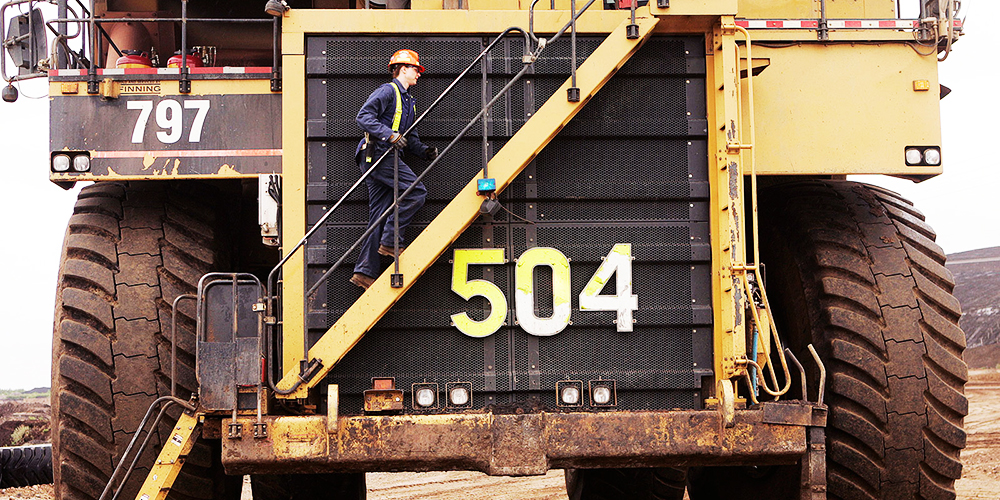Future oil sands growth driven by expansion of existing production rather than new “greenfield” projects.
While the Alberta oil sands grew rapidly over the past 15 years and became a major source of global supply growth, lower oil prices could change the competitive position for new investments going forward, according to a new study from IHS (NYSE: IHS).
“Prior to the oil price collapse, oil sands were competitive with other key sources of supply in the medium to high cost range, depending on the type of project,” said Kevin Birn, senior director of IHS Energy.
“Lower prices are now lowering costs globally—including in the oil sands. In this paradigm, oil sands’ competitiveness position may shift—for better or worse.”
Entitled Oil Sands Costs and Competitiveness, the new IHS Oil Sands Dialogue report explores the past, present and future of these trends and what a changing business environment means for the competitiveness of oil sands investment in the future.
Oil sands production more than tripled—from 600,000 b/d to more than 2.3 million b/d—from 2000 to 2015, making oil sands a pillar of global supply growth. IHS expects oil sands output will continue to rise to 3 million b/d by 2020, largely through the completion of projects that were already under construction prior to the oil price collapse.
As output grew, the cost to construct new projects appreciated, rising more than 70 per cent from 2000-2014, owing to the fact that many projects were truly first-of-a-kind, with limited access to labor and services in a region that lacked sufficient infrastructure such as roads and power lines, the report says.
Labor costs, in particular, factored in to historical cost escalation given that these costs are the largest component of oil sands projects and the most susceptible to regional pressures.
Cost pressures were moderating in recent years, from a combination of global factors and local factors such as weaker steel prices and a historical expansion of regional service and labor market capacity. Compared to 2014, operating costs are down 20 per cent and capital costs are down 6 per cent.
IHS estimates that, on average in 2015, breakeven prices for oil sands projects have fallen by about $5 per barrel on average in 2014 and could be down by as much as an additional $5 per barrel by the end of 2015.
With sufficient infrastructure in place and labor and service markets expanded after more than a decade of strong investment and production growth, future production growth will be driven by the expansion of existing, rather than new “greenfield” projects, the report says. Expansion projects are more manageable and predictable because they are smaller in scale, have shorter lead times and require less labor.
IHS expects that more than 70 per cent of oil sands production growth during the 2015-2020 period is expected to come from such expansions.
“Now that significant infrastructure has been built over the past 15 years, the oil sands industry is shifting to a new period where success will be measured by efficient operation of existing facilities,” Birn said.
“Growth will be driven by incremental expansions. The current lower-oil price environment is abetting this transition as new projects are delayed and producers increasingly focus on best practices and operational excellence.”
Lower oil prices—which have fallen, on average, to more than half of what they were in 2014—could also shift the relative competitive position of oil sands compared to other sources of supply if cost reduction efforts bear less fruit than efforts elsewhere, the report says.
This could mean that, among companies that invest globally, projects in other regions could be prioritized over those in the oil sands.
However, several factors—in addition to the shift towards the expansion of existing “brownfield” projects over new ones—support ongoing investment in the Canadian oil sands, the report says. Those factors include:
Future oil sands labor demand is expected to be lower — With production growth expected to be dominated by smaller scale brownfield projects and fewer new oil sands mining projects in the future, labor pressures are expected to moderate, helping keep labor cost pressure in check.
Companies are redesigning projects to lower costs — Oil sands project proponents are reducing scale of future projects as well as looking to lower upfront capital costs, plus maintenance and operating costs through greater standardization of project designs and replacement parts.
Service sector capacity has expanded with oil sands growth — Service sector capacity has grown with production. Modular fabrication capacity—which allows projects to be constructed in pieces and then later assembled onsite—expanded more than 400 percent from 2000 through 2013. As capacity has grown, fabricators have been more willing to enter into longer-term contracts, providing greater cost certainty.
“Oil sands’ competitive position will not only be shaped by the efforts of the oil sands industry, but also regional and global conditions—including changes to other sources of supply in the world,” Birn concluded. “The current level of prices will further drive innovation for cost efficiency. The challenge facing the oil sands is how much producers can lower their cost structures and, in the future, the degree to which the pace of cost escalation can be successfully managed.”

 石油圈
石油圈
